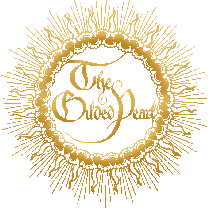


|



|
Baroness Mistress Dorren
of Ashwell
The hated disclaimer: pleating is at your own risk; I assume no
responsibility for damage to the fabric. I will, of course, help
as much as I can to expedite the pleating.
Material should be washed. Do not starch unless it is a very light,
flimsy, or insubstantial fabric.
If you want pleat to the very edge of the fabric, selvages should
be trimmed off. No hems, that is done after the pleating. Garments
(such as the circular neckline of a chemise) need to have one seam
left open; this is the edge that we will feed into the pleater.
Draw a straight line on the fabric - this will be the line that
we use to guide the fabric through the pleater. It should be near
the edge of the fabric, at one edge (top or bottom) of the area
you plan to pleat. My pleater makes about 12" of pleating maximum;
if you need wider, you need to draw a second guide line about 12"
below the first, and we will have to put the fabric through to machine
twice. Expect to lose a bit off the end where you’ll want to trim
for evenness before hemming
Plan to use about 3 times the width of material that you want
to end up with after pleating and smocking. Although the smocking
will stretch, the best and most authentic effect is that of closely
gathered pleats. Right now, I am only familiar with working in a
straight line. Pleaters can be coaxed to go around gradual curves
(as for a chemise neckline) but my experiments with it still make
a rather uneven pleat; I suspect I may be trying to do too much
of the curving right near the seams, which results in some rather
interesting bubbling of the fabric - not necessarily unworkable,
but not yet smooth. I'm willing to try it, but I make no promises
- it’s still in the experimental stages at this writing (6/16/97)!
Seams should be ironed flat and the selvages trimmed off. French
seams should be 1/4" for the sealed seam, and 1/2" for the sealing
seam. No selvages. I am still working on this; pleating through
seams has the potential to bend and break needles (this, I am told,
is the equivalent of blowing fuses, and will happen on a fairly
regular basis) if not done carefully. If we can't pleat the seam
areas, we can do the gathering up to the seam areas, which can be
hand-gathered afterward - still faster than hand gathering the whole
garment.
Lames and metallics apparently will not pleat. I would prefer
not to pleat anything plastic-y. Pleating has the potential to mar
satins as they feed through the gears. The manual tells me that
I should be able to pleat most other things from broadcloth weight
through velvets.
I can provide basic instruction in smocking if needed; if you
let me know beforehand, I can photocopy a few pages out of a book
that has good illustrations and diagrams - alternately, most generic
needlework books have a small section on smocking.
I am interested in obtaining different raglan patterns to experiment
with; please let me know if you have one you’d be willing to share!
Please call me if you have additional questions or concerns or
send eMail to dorrenash@yahoo.com.
Dorren
[Barbara L. Ding]
 Back
to the Gilded Pearl Marketplace
Back
to the Gilded Pearl Marketplace